Hello, dog lovers! I am Dr. Arif Azizi, and in this blog post, I will tell you briefly about what causes corn on dogs’ paws. Firstly, we must understand what corn is. Corns, also known as hyperkeratosis, can develop on dogs’ paw pads due to various reasons.
One of the primary causes is repetitive friction or pressure on specific areas of the paw pads, leading to the thickening and hardening of the skin. when you notice discomfort in your furry friend’s paws? It’s essential to understand what causes corns on dogs’ paws to
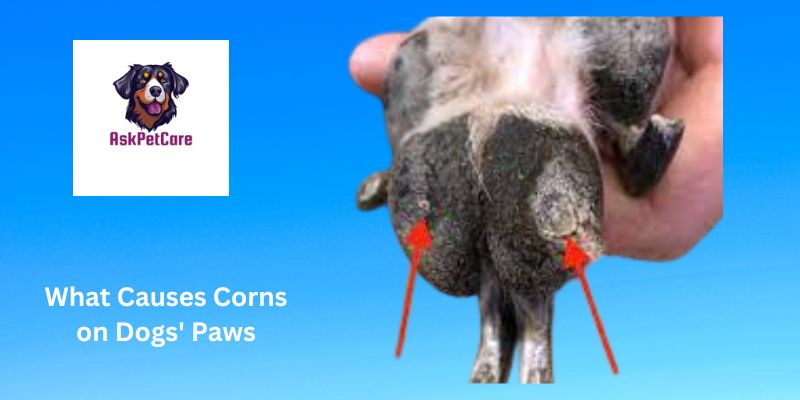
While writing this blog, I’m using what I’ve learned from my studies in veterinary medicine and running my pet clinic for 14 years. I’ve also gained knowledge from taking care of pets. The ideas I’m sharing come from knowing about animal health, pet care, and what’s best for our furry friends. Everything I’m saying is based on research, my experience working with animals, and my love for keeping pets healthy and happy.
A complete list of What causes corns on dogs’ paws:
There are a lot of reasons for the development of corn on dog paw pads.
- Friction and Pressure: Excessive walking or running on hard surfaces like concrete or asphalt can lead to friction and pressure on the paw pads, causing corn to develop.
- Genetic Predisposition: Some dog breeds are more prone to developing corn due to their genetic makeup. Breeds with short hair coats and sensitive skin, such as Greyhounds and Whippets, may be more susceptible.
- Environmental Factors: Exposure to extreme temperatures, abrasive surfaces, and chemicals can irritate the paw pads and contribute to corn formation.
- Improper Grooming: Neglecting proper paw pad care, such as infrequent trimming of overgrown hair and nails, can exacerbate paw pad issues and increase the risk of corn development.
- Weight Distribution: Dogs who bear more weight on certain areas of their paw pads, such as those with uneven weight distribution due to conformational issues or injuries, may be more prone to developing corns.
- Allergies and Irritants: Allergic reactions to environmental allergens or contact with irritating substances can cause inflammation and discomfort in the paw pads, leading to corn formation.
- Poor Footwear: Ill-fitting or inappropriate footwear, such as tight boots or shoes, can cause rubbing and chafing on the paw pads, increasing the risk of corns.
- Trauma or Injury: Traumatic injuries to the paw pads, such as cuts, abrasions, or burns, can damage the skin and predispose it to corn formation during the healing process.
- Age and Activity Level: Older dogs and those with high activity levels may be more susceptible to developing corns due to the wear and tear on their paw pads over time.
- Foreign Bodies: Embedded foreign objects, such as splinters or thorns, can cause irritation and inflammation in the paw pads, potentially leading to corns if left untreated.
- Obesity: Dogs that are overweight or obese may experience increased pressure on their paw pads, leading to corn development due to the extra weight bearing down on the feet.
- Overexertion: Dogs that engage in intense physical activity, such as running or jumping for extended periods, may experience excessive strain on their paw pads, increasing the likelihood of corn formation.
- Poor Hygiene: Lack of proper paw pad hygiene, such as failure to clean and dry the paws regularly, can create a breeding ground for bacteria and fungi, potentially leading to infections and corns.
- Structural Abnormalities: Dogs with structural abnormalities in their feet or legs, such as flat feet, collapsed arches, or uneven weight distribution, may be predisposed to developing corns due to altered biomechanics.
- Medical Conditions: Underlying medical conditions, such as autoimmune disorders, hormonal imbalances, or skin diseases, can compromise paw pad health and make dogs more susceptible to developing corns as a secondary complication.
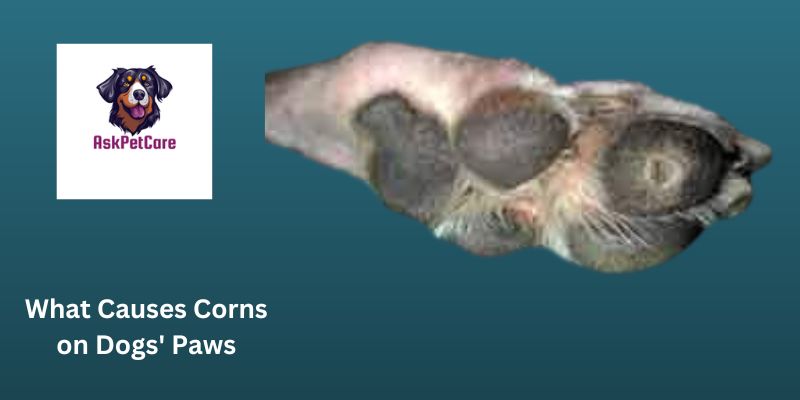
By considering these factors, you can better understand the complex nature of corn development on dogs’ paws and take proactive steps to prevent and address this common issue. for more details about a lump on a dog paw, read my article.
Here’s a simple table outlining what causes corn on dogs’ paws:
| What Causes Corns on Dogs’ Paws |
| 1. Friction and Pressure |
| 2. Genetic Predisposition |
| 3. Environmental Factors |
| 4. Improper Grooming |
| 5. Weight Distribution |
| 6. Allergies and Irritants |
| 7. Poor Footwear |
| 8. Trauma or Injury |
| 9. Age and Activity Level |
| 10. Foreign Bodies |
| 11. Obesity |
| 12. Overexertion |
| 13. Poor Hygiene |
| 14. Structural Abnormalities |
| 15. Medical Conditions |
This table provides a simple and organized overview of the various factors that can contribute to what causes corns on dogs’ paws
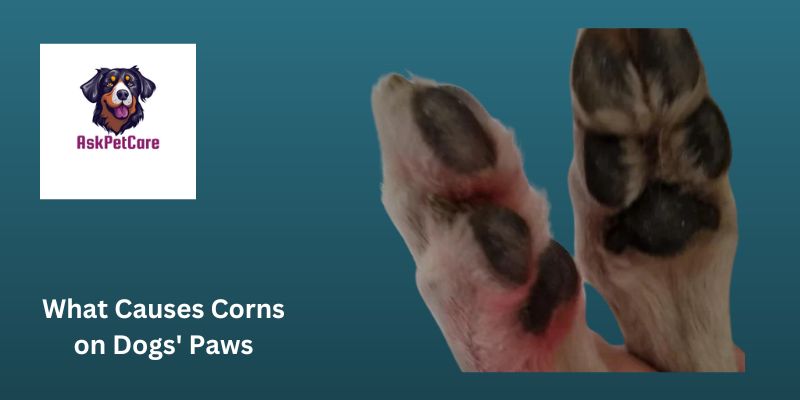
How do you get rid of corn on dogs’ paws?
how to treat corn on dog paw.
Getting rid of corn on dogs’ paw pads requires active care. Here are some steps you can take:
Consult a veterinarian.
The first step is to consult a veterinarian for a proper diagnosis and treatment. They can determine the severity of the corns and provide personalized advice.
Paw Pad Care:
Keep your dog’s paw pads clean and moisturized to prevent further irritation. Use a gentle cleanser and apply a pet-safe moisturizer to keep the skin soft and supple.
Trimming excess hair and nails:
Regularly trim any excess hair and nails around your dog’s paw pads to reduce friction and pressure.
Softening Agents:
Your veterinarian may recommend using softening agents or paw pad balms to help soften the corns and promote healing. These products can help reduce pain and inflammation.
Orthopedic Solutions:
In some cases, veterinarians may recommend orthopedic solutions such as padded booties or custom orthotic inserts to provide additional support and softening for your dog’s paw pads.
Surgical Intervention:
In severe cases where corn is causing important discomfort or affecting your dog’s mobility, surgical removal may be considered as a last option. However, this option is typically kept for extreme cases and requires careful consideration.
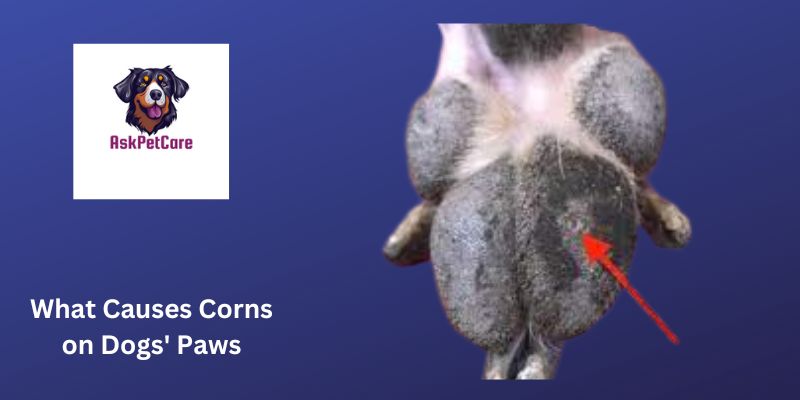
Do dog corns go away on their own?
Dog corns do not typically go away on their own. Without interference, corn may persist and even worsen over time, leading to discomfort and mobility issues for your furry friend. It’s essential to address corn sharply and seek appropriate treatment to prevent further complications.
While home remedies may provide temporary relief, it’s vital to consult with a veterinarian for proper diagnosis and treatment recommendations. Some home remedies you can try include:
Warm Soaks: Soaking your dog’s paws in warm water with Epsom salts can help soften the corn and reduce pain and inflammation.
Paw Pad Balms: Apply pet-safe paw pad balms or moisturizers to keep the skin hydrated and reduce friction.
Protective Booties: Consider using protective booties to minimize pressure and irritation on your dog’s paw pads, especially when walking on hard surfaces.
Dietary Supplements: Certain dietary supplements, such as omega-3 fatty acids and vitamin E, may help support healthy skin and paw pad integrity.
What do corns look like on dogs’ feet?
Corns on dogs’ feet typically appear as small, circular, raised areas of hardened skin on the paw pads. They may range in size from a pinhead to a pea and can be white, yellow, or gray. Corns can cause discomfort and may be accompanied by symptoms such as limping, licking, or chewing of the paws, as well as an unwillingness to walk or exercise.
.I hope you are thoroughly understanding what causes corn on dogs’ paws. If you still have any issues,s,s, you can contact me.
For further details,,, you can read my article
What are dog foot paw allergies? Dr practical Tips and Tricks
why-do-my-dogs-paws-smell-like-corn-chips/
Here are some reference books that are considered authoritative on the topic of dog care, including nail care. We read these books during our DVM and MSc studies. For more information, you can also study them.
- “The Complete Dog Owner’s Manual” by Dr. Bruce Fogle
- “The Ultimate Guide to Dog Care: Everything You Need to Know to Keep Your Dog Happy and Healthy” by Amy Marder and Andrew Luescher
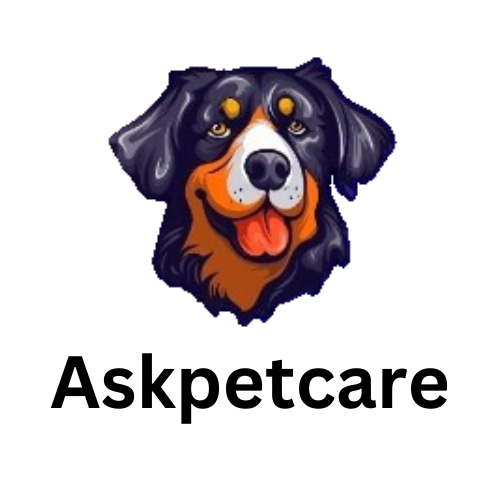

1 thought on “What Causes Corns on Dogs’ Paws: Reasons,Symptoms,Treatment”